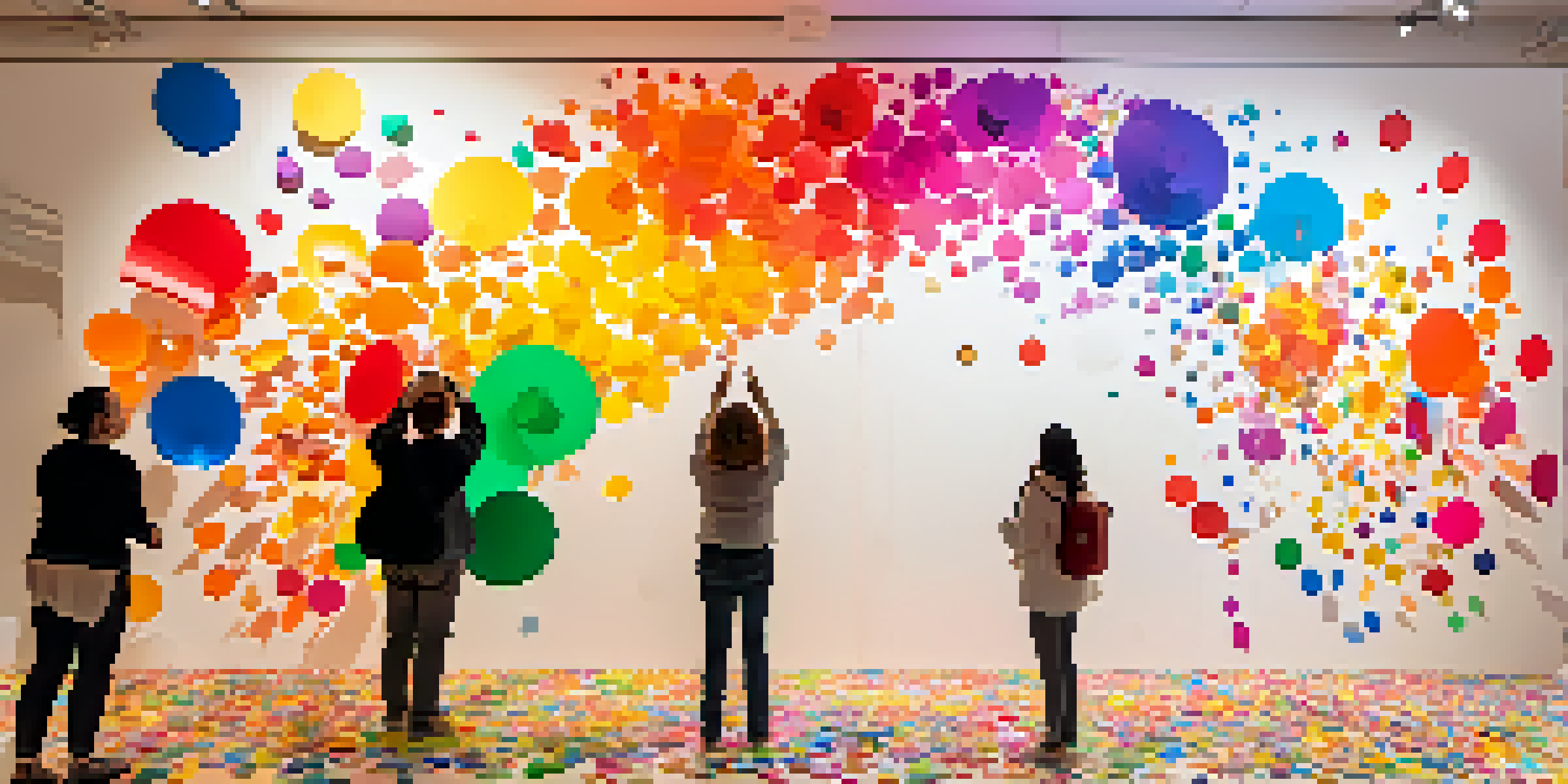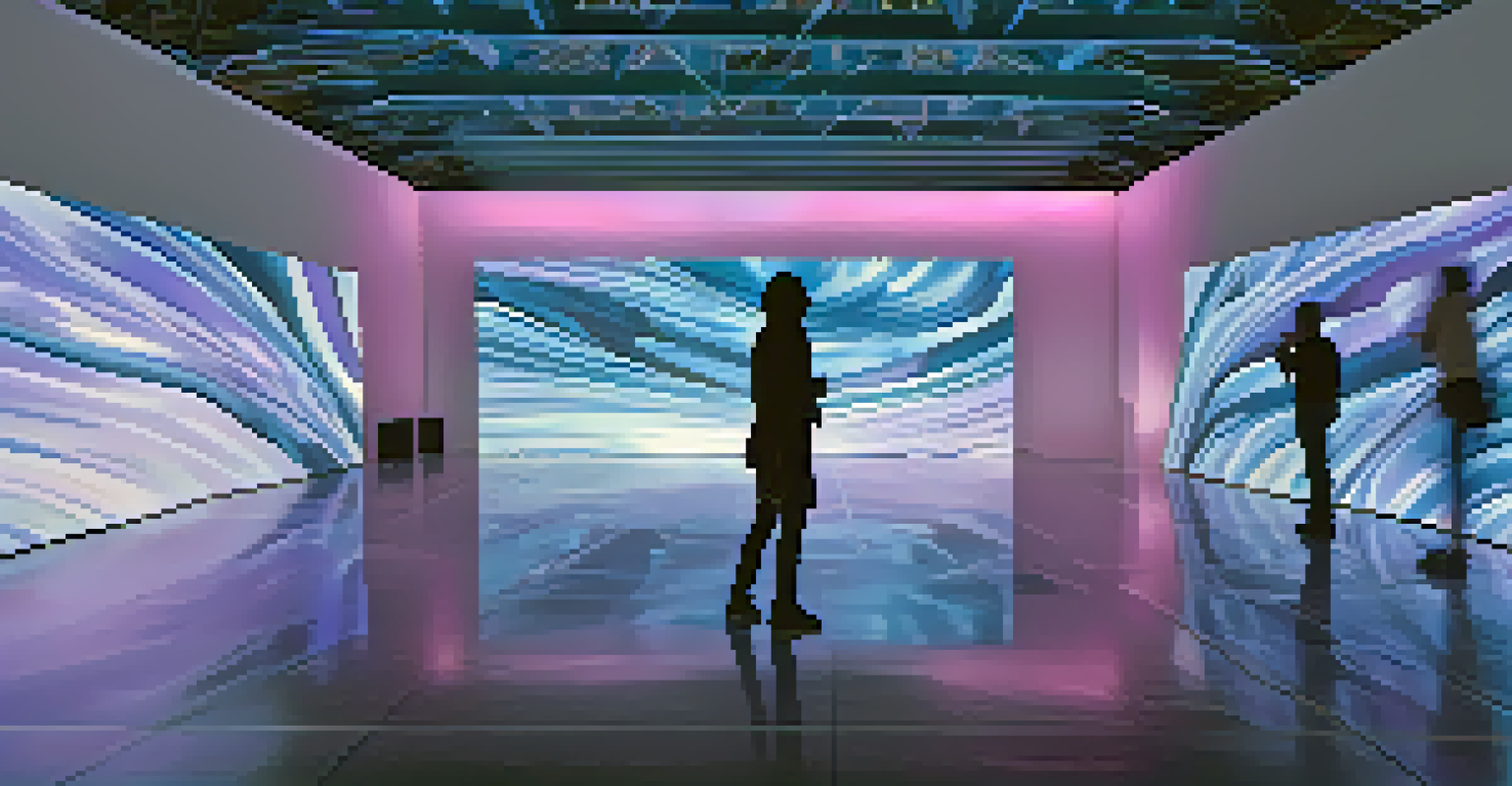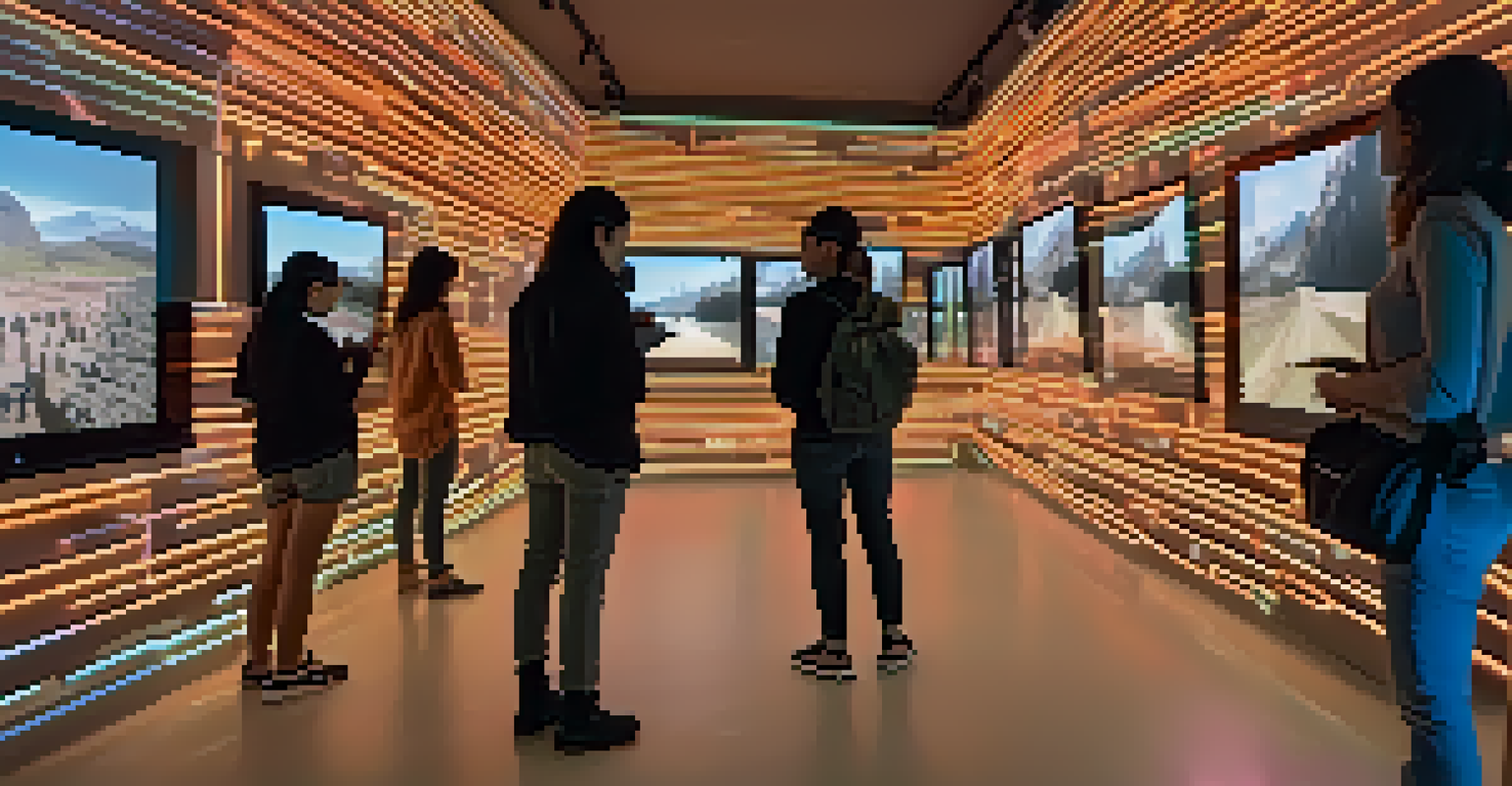Interactive Installations: The Future of Experiential Art

Understanding Interactive Installations in Art
Interactive installations blend art and technology, inviting audience participation. They transform traditional art spaces into dynamic environments where viewers become active participants. This shift encourages deeper engagement, making art more accessible and relatable.
Art is not a mirror to hold up to society, but a hammer with which to shape it.
Imagine walking into a room where your movements trigger a cascade of colors or sounds. These experiences break down the barriers between the artwork and the observer, creating a dialogue that can evoke emotion and spark creativity. This interaction is what sets interactive installations apart from conventional art forms.
As technology advances, the possibilities for these installations expand exponentially. Artists are now utilizing virtual reality, augmented reality, and even artificial intelligence to create immersive experiences that challenge our perceptions of art. In doing so, they redefine the very essence of artistic expression.
The Role of Technology in Interactive Art
Technology is the backbone of interactive installations, providing the tools artists need to create engaging environments. From projection mapping to sensor technologies, these innovations allow art to respond in real-time to audience interactions. This technological foundation is what makes the art experience so unique and personalized.

For example, consider an installation that uses motion sensors to change visuals based on where you stand. This not only captivates the audience but also encourages them to explore their surroundings in a new way. The interplay between technology and creativity opens up a world of possibilities, fostering innovative artistic expressions.
Interactive Art Engages Viewers
Interactive installations invite audience participation, transforming passive observation into active engagement.
Moreover, advancements in technology make these installations more accessible to a broader audience. With online platforms and social media, artists can share their work globally, inviting participation from people who may never have the chance to visit a physical location. This democratization of art is a significant step towards inclusivity.
Creating Immersive Experiences for Audiences
Immersive experiences are at the heart of interactive installations, designed to envelop participants in a multi-sensory journey. Artists carefully curate their installations to engage sight, sound, and even touch, making viewers feel like they’re part of the artwork. This type of engagement can lead to profound emotional reactions.
The artist is not a special kind of person; rather, each person is a special kind of artist.
Think of the last time you were captivated by an art piece. Now, imagine that piece inviting you to step inside and explore its depths. Immersive installations create these moments, allowing audiences to forge personal connections with the art. Each interaction can evoke different feelings, making every viewer's experience unique.
Additionally, these experiences often encourage collaboration among participants. Whether it’s working together to create a visual display or interacting with others in an augmented reality environment, interactive installations promote a sense of community. This social aspect enriches the overall experience and fosters shared memories.
Case Studies: Successful Interactive Installations
Several prominent examples highlight the impact of interactive installations on the art world. Take, for instance, 'The Obliteration Room' by Yayoi Kusama, where participants add colorful stickers to an all-white space, transforming it into a vibrant explosion of color. This hands-on approach invites viewers to become co-creators of the artwork.
Another notable example is TeamLab’s 'Borderless,' an exhibition that uses digital art to create a fluid, ever-changing environment. Visitors can walk through interactive displays that respond to their movements, making each visit a unique experience. Such installations showcase the potential of technology to enhance artistic expression.
Technology Enhances Artistic Expression
The integration of advanced technologies like virtual reality and motion sensors allows artists to create dynamic, personalized experiences.
These case studies illustrate how interactive installations not only captivate audiences but also encourage them to think critically about their role in the artistic process. By breaking traditional boundaries, these artists invite everyone to engage with art in new and innovative ways.
The Impact of Interactive Art on Society
Interactive art installations can significantly influence societal perspectives and foster community engagement. By encouraging participation, these works often address pressing social issues, prompting dialogue and reflection among viewers. This engagement can lead to a greater awareness of cultural and social dynamics.
For example, installations that address themes like climate change or social justice invite audiences to consider their roles in these issues. They create a space for discussion and inspire action, making art a powerful catalyst for change. By engaging with these topics, viewers can feel empowered to take steps in their own lives.
Moreover, interactive art can serve as a unifying force in diverse communities. By creating shared experiences that bring people together, these installations break down barriers and foster understanding. In this way, art becomes not just a reflection of society but a tool for transformation.
The Future of Interactive Installations
As we look to the future, interactive installations are poised to evolve further with emerging technologies. Innovations like artificial intelligence and machine learning could enable even more personalized experiences, responding to individual preferences and emotions. This potential makes the future of interactive art incredibly exciting.
Imagine walking into an installation that adapts in real-time to your mood or past interactions. Such advancements could redefine how we experience art, making it even more engaging and relevant. The integration of technology will continue to push the boundaries of creativity, inviting artists to explore new horizons.
Art as a Catalyst for Change
Interactive art installations can address social issues and foster community dialogue, making art a powerful tool for societal transformation.
In addition, the rise of virtual and augmented reality will likely lead to more immersive installations that can be experienced from anywhere in the world. This accessibility could open up interactive art to a global audience, further blurring the lines between artist and viewer. As we embrace these changes, the possibilities for experiential art are limitless.
Challenges Facing Interactive Art Installations
While interactive installations offer exciting possibilities, they also face unique challenges. One significant issue is the reliance on technology, which can sometimes malfunction or become outdated. Artists must navigate these technical hurdles to ensure their installations deliver a seamless experience for viewers.
Moreover, the balance between technology and artistic intent is crucial. As installations become more complex, there’s a risk that the art itself may take a backseat to the technology used. Artists must remain vigilant to preserve their creative vision while embracing new tools and techniques.

Additionally, funding and resources can be a barrier for many artists looking to create interactive installations. These projects often require substantial investment in technology and space, limiting opportunities for emerging artists. Addressing these challenges is essential for fostering a vibrant future for interactive art.